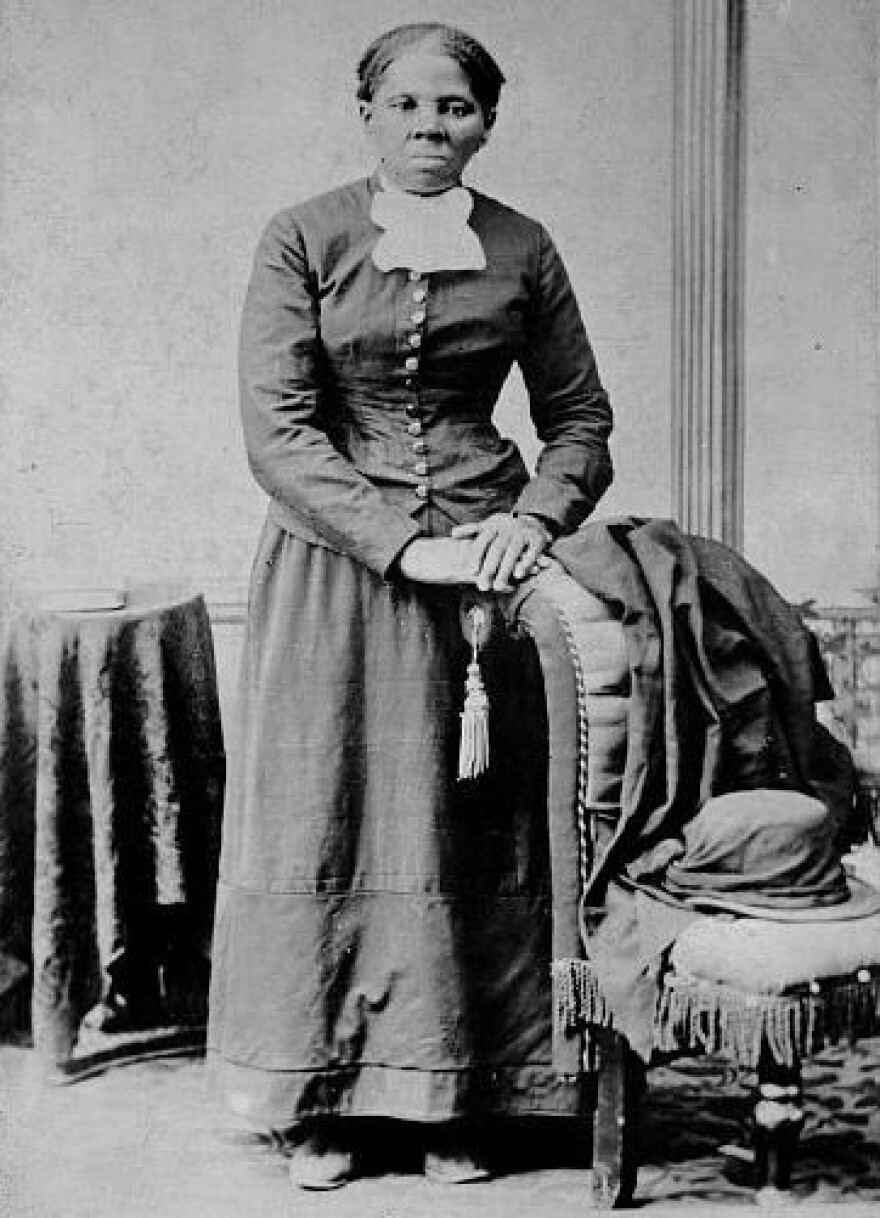New York lawmakers and federal parks officials gathered in Washington, D.C. Tuesday to formally establish the Harriet Tubman National Historical Park in New York.
U.S. Interior Secretary Sally Jewell presided over an official signing ceremony to make the park part of the National Park System. It encompasses the site of Tubman's old home on the outskirts of Auburn, about 25 miles west of Syracuse, and a nearby church where she worshipped.
The New York park will focus on Tubman's work later on in her life when she was an active proponent of women's suffrage and other causes. It will be a sister park to the Harriet Tubman Underground Railroad National Historical Park in Maryland.
U.S. Senators Charles Schumer and Kirsten Gillibrand joined Secretary Jewell in the official signing ceremony. Watch ithere.
As it stands now, the Tubman house and four other Auburn properties with ties to the underground railroad conductor, are a regional draw - pulling in people from upstate New York and the Northeast who are interested in the history of the Underground Railroad. That all changed Tuesday when the sites tied to Tubman officially became part of the National Park Service.

"It raises it to a another level, so it’s no longer just a local site of significance, it will put us into a whole different playing field,” said Meg Vanek, executive director of the Cayuga County Office of Tourism. And that means more people ambling through Auburn, a city of almost 28,000.
"We do understand, once it’s a national park, that definitely we will see more visitors that will not only come to Tubman, but they will also come to see the Seward House Museum, the Cayuga Museum, the Willard Memorial Chapel, all the great historic sites we have,” said Vanek.
And that’s good news for Stephanie DeVito, of the Auburn Downtown Business Improvement District, whose job it is to nurture small business.
"Anytime you have something of that nature, especially pertaining to history, it will attract people into the downtown area, and certainly generate revenue for our area business and restaurants and retail stores,” said DeVito.
Auburn Mayor Michael Quill says the federal designation means improvements to the properties involved, including Tubman’s Home for the Aged, the A.M.E. Zion Church she attended and her home.
Quill say the Tubman designation won’t save Auburn from years of economic malaise. He says the city is turning around economically right now. What it does, is create more buzz about Auburn, which, according to legend, two centuries ago defined its future, by choosing to be home to a prison instead of the state capitol.
And perhaps most importantly of all, Quill says it shines a bigger light on Tubman and the traits she shared with the community where she spent the last 50 years of her life.
“One of her favorite sayings was just keep going," he said, "and I think that’s a good motto for all of us. Just keep going, things get tough, just put your head down and work a little harder.”

Few American men or women can claim a life as heroic as Tubman’s. Born a slave in Maryland, badly injured as a child when a slavemaster struck her in the head with a metal weight, at age 27 she made her escape to Philadelphia. That alone took courage enough, but she promptly turned around and snuck back into Maryland to bring out members of her family. The year was 1849.
One year later, a Buffalonian was president: Millard Fillmore. Seeking to head off the bloodshed of a civil war, Fillmore engineered a compromise meant to satisfy both North and South.
Part of that compromise was his signing of the Fugitive Slave Act of 1850 – a law that made it a crime for any American to aid an escaped slave or to impede the return of a slaveholder’s “property.” It outraged northerners, especially those who for years had helped fugitive slaves along the informal Underground Railroad that led to places like Buffalo, Niagara Falls, Lewiston, Fredonia, Rochester and Syracuse.
The new law made Tubman’s already difficult mission even harder. Now she had to get the slaves she snuck out of Maryland all the way to Canada. It was dangerous work. She carried a gun, wore disguises and worked out a series of codes to avoid detection. Though Tubman was only five feet tall and illiterate, she was smart, brave and tough.
In all, Tubman made an estimated 13 secret trips to Maryland and personally led 60 to 70 slaves to freedom, but her adventures were far from over. When the Civil War broke out, she served the Union Army as a nurse, as a scout and, on one occasion, led troops on an amphibious assault to burn plantations in South Carolina. After the war, she settled in the small, prosperous Finger Lakes city of Auburn, where she was a friend and confidante of William H. Seward, the Secretary of State under Presidents Abraham Lincoln and Andrew Johnson.
Despite her achievements and the abolition of slavery, Tubman suffered the indignities common to black life in America – she was once roughed up on a train to New York for refusing a conductor’s order to give up her seat and she was denied a pension for her Civil War service until 1899. But she continued to speak out for civil rights and, later, for women’s suffrage and women’s rights.
Unlike many black heroes of the Civil War era, Tubman remained famous throughout her long life. She finally died in 1913, near her 91st birthday, and was buried with military honors in Auburn.


